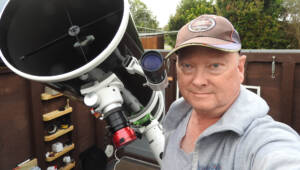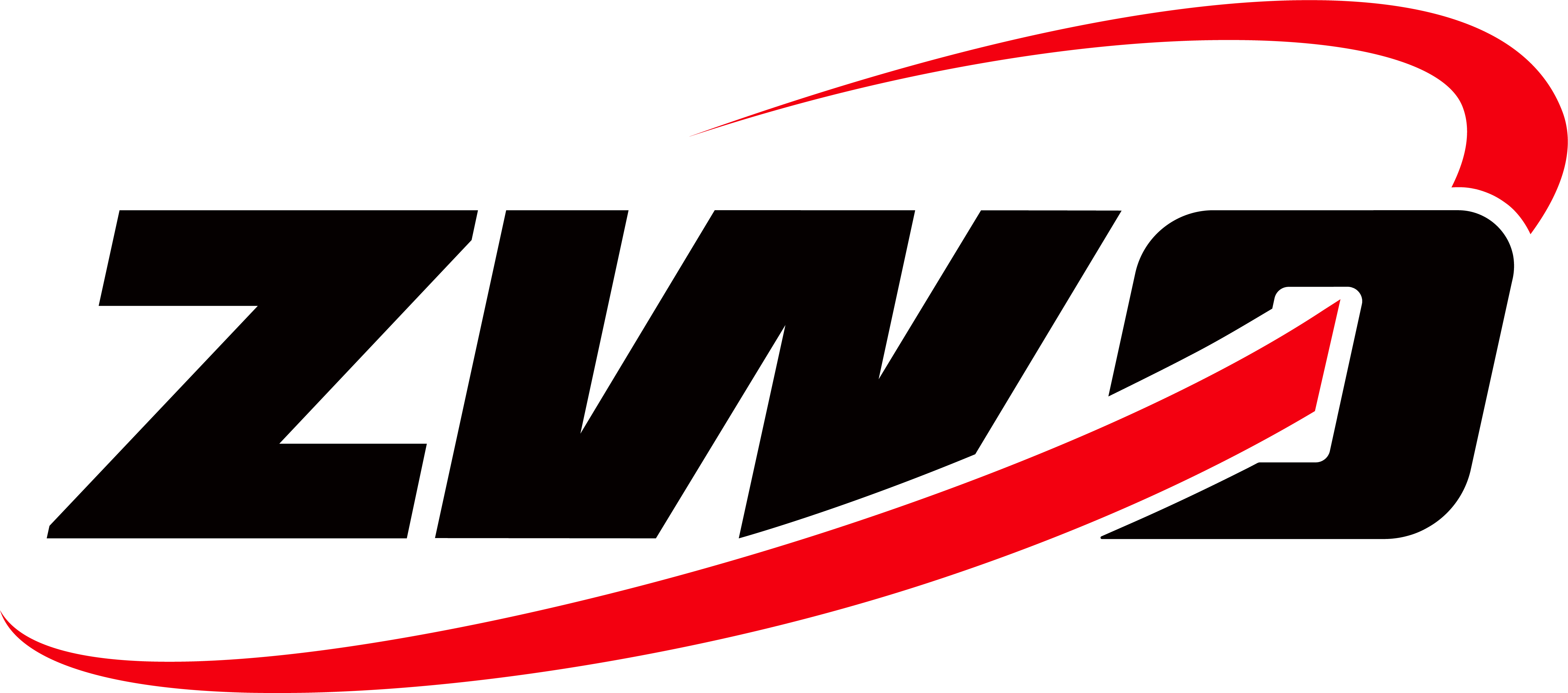Q1: At first, congratulation that your nice image won #ASIWEEK. Can you introduce yourself to us?
Thank you very much for choosing my picture.
I am a 39-year-old man who has been passionate about astrophotography for 5 years, and about astronomy since I was a child.
I practice from my garden in Amiens city (France) and I also travel to the countryside in a club to observe with friends.
I am invested in an associative life and in the community of astrophotographers.
I am also a jazz musician (guitar) and play in two amateur orchestras.

At the observatory of my club far from the city lights
Q2: Why do you love astronomy? What does it mean to you?
I like astronomy and in particular astrophotography the possibility of escaping from everyday life by contemplating the marvels of the sky. I like being able to express my artistic creativity through astrophotography, and I also like sharing this passion with other amateurs.
I love astronomical instruments and their settings and optimizations, and I like to always progress and discover new instruments and techniques.
I also love exploring and trying to understand what I am able to understand about the universe through my images and those of other amateurs.

ARP84 with RC8 and ASI294mm
Q3: When did you start astrophotography? Is there anything you want to tell beginners?
I started 5 years ago, and I can say that if you are passionate and motivated, you can progress quickly, but you have to remain reasonable in the objectives to be reached, and always remember that it remains a pleasure above all. I learn every day and hope to continue to learn every day because the knowledge is endless, as in many fields.
Q4: What gear do you use for astrophotography? Any pictures of them?
Since 4 months ago, I have been using a 10” f/4 Lacerta Fotonewton telescope with an IOTRON CEM120 mount.
My camera is ZWO ASI2600MM Pro with ZWO EFW2 and ZWO M68 OAG. My guiding camera is ZWO ASI290MM Mini.
I had got several instruments in the past, from Newtonians to Ritchey-Chretien telescope, and also refractors for wide-field but at the moment I prefer middle-long focal length and that’s why my instrument is a Newton (focal length and rapidity).
I began with a CCD camera (kaf8300) and came into a CMOS camera two years ago with the sensor from ASI1600MM Pro, and then with the ASI294MM Pro, and finally with the ASI2600MM Pro.
My filters are ANTLIA 36mm LRGBSHO 3,5nm filters.

10” f4 Lacerta Fotonewton telescope + IOTRON CEM120 mount + ASI2600MM Pro + ZWO EFW2 + ZWO M68 OAG + ASI290MM Mini
Q5: It seems to us that you really like DSO imaging. Are you also interested in planetary imaging? Can you tell us the reason?
Yes, I love DSO imaging more than planetary imaging because I love to discover the universe through my pictures, not only from the solar system, and also because I love artistic possibilities which are offered by DSO imaging. I also like lunar and solar imaging, and of course, I did a little bit of planetary imaging when I began, and I found it very interesting.
In my opinion, both are very interesting and can bring different feelings and emotions to astrophotographers. I love to see planetary pictures, but I prefer DSO imaging.

Planetary imaging with Newton 250mm and ASI120MM in 2016
Q6: Your ASIWEEK image “VDB152” was outstanding! How did you capture it?
Thank you! I captured it like my other pictures from my Bortle 7 backyard, with the 10” Newton and the ASI2600MM Pro.
This image was an experiment and quite a challenge under my downtown sky due to the nature of these very faint objects, and the processing was quite difficult. I am rather happy with the result because, although having probably approached the limits of the Bortle 7 sky, it shows that urban astrophotography still offers possibilities with this type of object.
37h 30′ of exposures carried out in September and October 2021 through LRVB filters supplemented by H and O filters for the PN and the supernova remanent.

VDB152 with ZWO ASI2600MM Pro + LACERTA Austria Newton + 10” f3.8 IOPTRON CEM 120
Q7: What do you think is the most difficult part of DSO imaging? How do you deal with it?
I think the technical part is quite difficult but can be learned relatively quickly, then perfected over time by practicing and reading a lot.
The most difficult part in my opinion is processing, not because of software to master, but because it takes time to take a step back from what processing is or should be, and because every DSO image is different and therefore every treatment has to be different.
Appreciating wine takes time and requires tasting a lot of wine to teach the palate to appreciate its flavors. I think the same about processing a picture: I have to practice a lot, look at other pictures, and look at my pictures, again and again, to understand when I can progress, what I can change in my workflow, etc.
I try to deal with this difficulty by taking time when I process a picture.

Processing of IC1396 in 2016 (left) and 2018 (right)
Q8: Do you have any unforgettable experience during these years of astrophotography? (interesting, scary, weird or frustrating, any kinds of experiences are welcome)
Not any particular experience, but I can say that what surprises me is that I always want to test new instruments or techniques, even when my hardware is working well and is well-set.
I would like to always change my setup to satisfy my curiosity and discover new techniques and instruments. I am eternally dissatisfied! I know that when a setup works well, I should take advantage of it, and I know that it is always long and difficult and very frustrating to have to start the adjustments again with a new setup… but yet I cannot avoid this. It’s a real addiction!

My little observatory
Q9: Do you have some shooting plans in the end of this year?
No, and I never plan to shoot. I choose the next DSO target when I have finished a DSO data acquisition and when the weather is clear. Between my personal pictures, I also love to know to grab data for planetary Nebula searchers, which takes a lot of time since these objects are very faint.

St-DR 61 Planetary Nebula: New Discovery from St-Dr team, taken in October 2021 with Newton 10” and ASI2600MM Pro (66.5 hours exposure)
Q10: When is your most exciting moment during a whole astrophotography project?
The most exciting moment is in the morning, after a clear night when I look at my computer to see if everything was OK during the night! I am so happy when I can see that 10 or more hours of data are there and exploitable, and I am so sad or angry when an issue occurred during the night! In both cases, I am very excited!
Q11: We noticed that you have ASI294MM Pro and ASI2600MM Pro. What different feelings do these two cameras bring you?
Yes, I had ASI294MM Pro just before ASI2600MM Pro. ASI2600MM Pro is better for me to match my instrument’s focal length with its smaller pixels (3.76 vs 4.63) giving me the scale of 0.8”/pixel which was my goal, and also the ASI2600MM Pro’s sensor is bigger, giving me more field of view.
The 294 was a great match with my previous instrument which was a GSO RC8 telescope and ASI2600MM Pro is a perfect match with the 10” Newtonian and will probably be also a great match if I plan to get 12” Newtonian, which is my next goal.

Messier 81 with RC8 and ASI294MM Pro (42h exposures)
I found that ASI294MM Pro might be a little bit more sensitive than ASI2600MM Pro, but at the cost of its amperage and also more difficulties to calibrate well.
I did not run the bin1 mode of the ASI294MM Pro because my focal length was too long with the RC8 (1600mm) but it could also have been a great solution for the 10” Newtonian at the cost of less FW. That’s also why I chose to get ASI2600MM Pro when I changed my telescope because of its 16bits range with small pixels.
I personally prefer monochrome imaging because it provides better resolution on DSO.

SH2-108 with Newton 10” and ASI2600MM Pro (16 hours exposures)
Q12: How do you think the future of astrophotography if take the increasingly heavy light pollution and the rapidly developed technology into consideration?
I think narrowband imaging is still possible even in highly polluted areas, and as the sensors are more and more sensitive and less and less noisy, NB imaging with shorter exposures might satisfy us for a long time again.
Also, for these reasons, lucky imaging in Broadband and why not in Narrowband seems to be the future of astrophotography, even in low pollution areas because we can get more resolution on DSO with this technique which is more and more accessible due to the sensors’ sensitivity and pixel size!
Q13: Did you have a teacher or did you just learn everything by yourself when you started astrophotography?
I learned everything by myself. Thanks to the internet and all the tutorials I found!
So I don’t have a teacher in real life, but many teachers – the community users who make tutorials or write lines about their experience. Now I am still learning many things from social networks and astrophotographers’ websites. I also like writing tutorials for others on my website.
But more I learned was from looking every day at other astrophotographers’ pictures which I liked, and trying to reach the goal to make nice pictures (from my point of view) by myself.
Q14: What’s your impression of ZWO? Is there anywhere you think we can do better? Please feel free to tell us.
I think ZWO made astrophotography more affordable as CMOS cameras came to the market. A few years ago, there were only CCD cameras which were very expensive, and as far as I remember, ZWO’s DSO cameras came at the same time as CMOS sensors which were a true revolution for astrophotography!
I think ZWO has very good communication with the users and customers, and you have a very good marketing and commercial strategy.
ZWO Products have good quality with a very affordable price (mechanics and electronics parts) compared to other brands, and I’d love to see ZWO develop their own mounts and telescopes in the future!

Heart & Soul nebula with ASKAR FRA400 and ASI294MM Pro


















